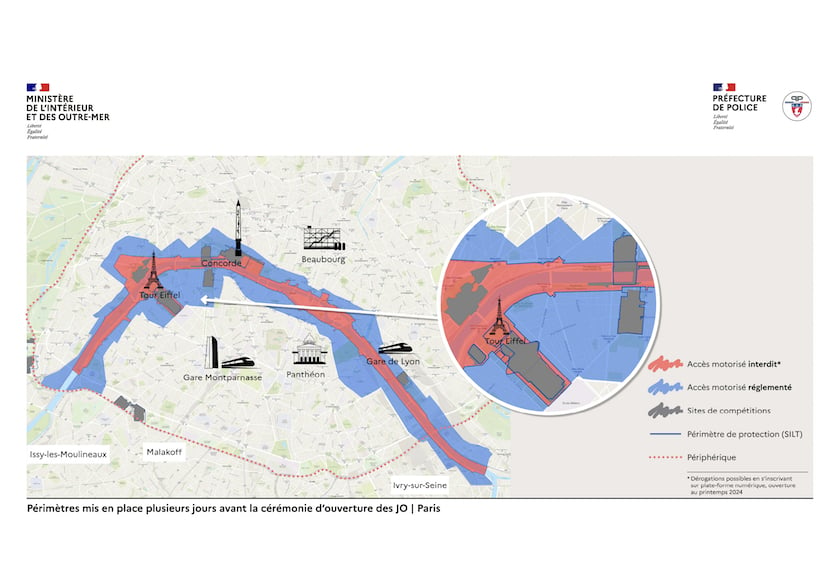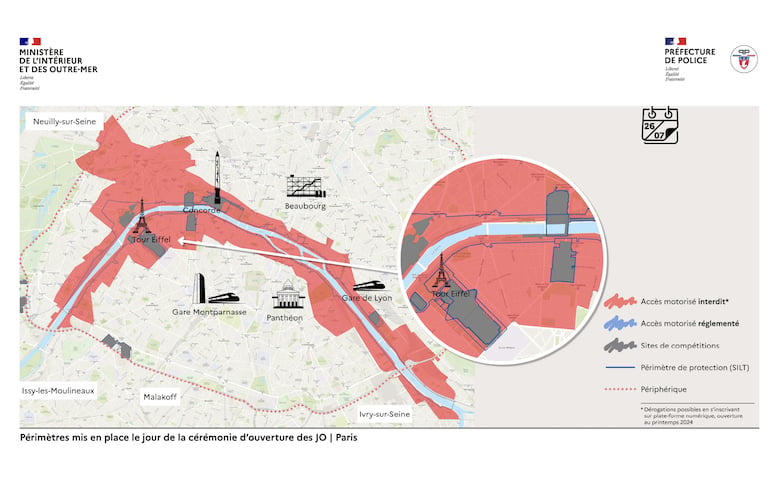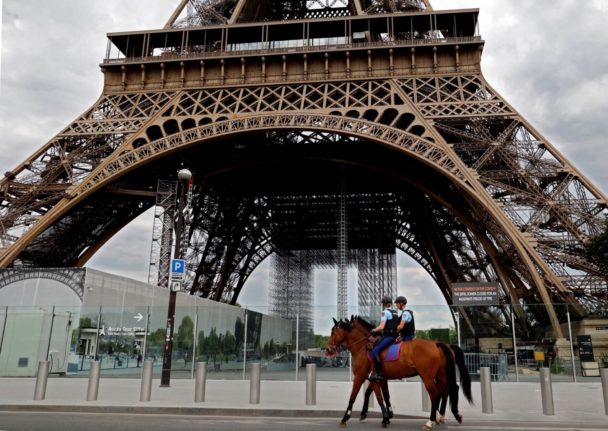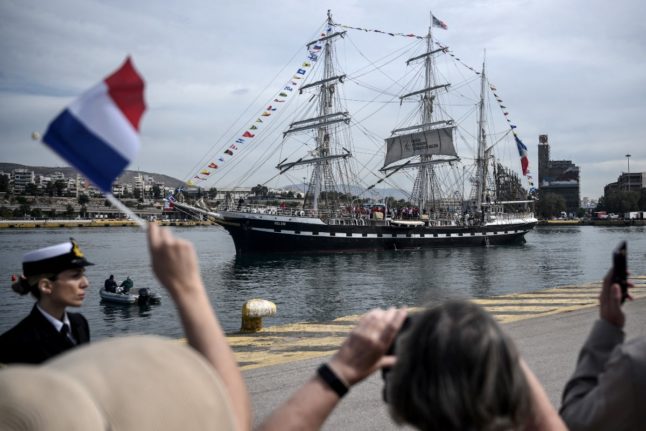During the days prior to the opening ceremony and throughout the Olympic Games, certain areas of the city will be sectioned off into zones, with some of them requiring a QR code to enter, which will become available on May 10th.
Where
One of the key factors of the Paris 2024 Games is that many of the events will take place within the city centre, using iconic locations like the Eiffel Tower as event venues.
Previous games have tended to be restricted to certain areas of their host cities, but organisers in Paris want to ‘take the Games out of the stadiums and into the city’.
Some events – like athletics – will be held in a stadium of course, Stade de France in the Paris suburb of Saint-Denis, but others will be held inside Paris.
Locations include the Champ-de-Mars (under the Eiffel Tower), Place de la Concorde, the Grand Palais and Les Invalides. Meanwhile the opening ceremony is scheduled to take place on the River Seine, on a 6km route through the city centre from the Pont d’Austerlitz to the Eiffel Tower.
As a result, there will be ‘security zones’ around certain areas.
Some of these are outside Paris itself such as the zone around Stade de France and the athletes’ village in Saint-Denis and the La Défense arena in Nanterre while others – such as Parc des Princes, the Accor and Paris Sud arenas and Roland Garros are within Paris but not in the city centre.
Within the city centre there are four security zones – Champ-de-Mars/Eiffel Tower, Trocadéro/Pont d’Iéna, Place de la Concorde and the Grand Palais to Les Invalides (including the Pont Alexandre III between them).
The zones are divided into SILT areas, grey, blue, and red. You can find detailed maps here, courtesy of the Paris town hall. You can also watch a short video explaining the zones from the Paris police prefecture (in French).
READ MORE: How to check for Paris Olympics disruption in your area
Grey zones – these are the event venues themselves, and will be open only to people who have a ticket to that event, or accredited people such as Games officials or journalists. Security will be tight and bags will be searched on arrival, as is standard at major sporting events in France.
Red zones – these are closed to all vehicles and motorbikes, with the exception of local residents, those visiting sick/ vulnerable people, emergency and rescue services – these people will register in advance for a special QR code.
It’s important to note that this does not affect people walking or cycling through these areas, they can enter as normal and do not need a QR code.
Blue zones – closed to vehicles and motorbikes with the exception of those outlined above for red zones, plus anyone who can provide a justification such as delivery drivers. Pedestrians and cyclists can move freely through the blue zones.
Licensed Paris taxis will be able to enter red and blue zones, as will VTC drivers such as Uber who have registered themselves and their vehicle in advance.
Metro stations in the red and blue zones may be closed or temporarily closed, although Metro lines will continue to run, but without stopping at certain stations.
SILT (or ‘anti-terrorism’) zones – you will need either a ticket or QR code, plus a form of identification, to enter these areas. On the maps, they are marked by a dark blue line surrounding the area. During the majority of the Olympic Games, the SILT zones will surround Games venues. However, during the Opening Ceremony the SILT zone will extend along the Seine and into central Paris. People who live in these areas will need to register to get a QR code to enter and exit. Otherwise, they will be blocked off to non-ticket holders.
READ MORE: Which areas will be closed in Paris during the Olympics?
When
The Games period runs from July 26th – August 11th for the Olympics and Aug 28th – September 8th for the Paralympics.
However, the restrictions will only be in place when there are events on. You can keep track of zoning and where restrictions will be in place using the interactive map on the Anticiper les Jeux (‘Get ready for the Games’) website. More info on how to use it here.
Restrictions on driving in red and blue zones will be in place 2.5 hours before the start of events and up to one hour afterwards (in central Paris, this could mean from 6.30am to midnight).
Opening ceremony
The exception to the rules outlined above is Friday, July 26th and the week before when the opening ceremony takes place.
The ceremony itself takes place along a 6km stretch of the river and will be subject to tight security – the upper and lower quais along the route will be reserved for ticket-holders (seated on the lower quais, standing room on the upper quais) and cannot be accessed by the general public.
Anyone who lives on the quais themselves will require a QR code to enter, as will any of their visitors – this must be registered in advance. The website that issues QR codes will open on May 10th, and Paris local authorities will encourage people living in these zones to get registered.
During the opening ceremony the red and blue zones will be extended to run along the river bank.
The opening ceremony is scheduled to take place in the evening, but exact times for security closures are yet to be revealed. During an interview with Le Parisien in April, interior minister Gérald Darmanin noted that more intense restrictions would start after 1pm.
As of mid-April, it was still unclear how many days in advance the restrictions for the opening ceremony would be put into place, but the red and blue zones are likely to be introduced in the week prior the ceremony.
You can see the estimated security zones for the days prior to the opening ceremony below:

As you can see (below), the red zone will be larger for the day of the opening ceremony.

Exceptions
The exact details of who will be able to enter security zones, and how to apply in advance for the QR code, will be revealed nearer the time. The online platform to request a QR code will open on May 10th.
You can also find more information about your individual case by using the ‘Anticiper les Jeux’ website.



 Please whitelist us to continue reading.
Please whitelist us to continue reading.
Member comments